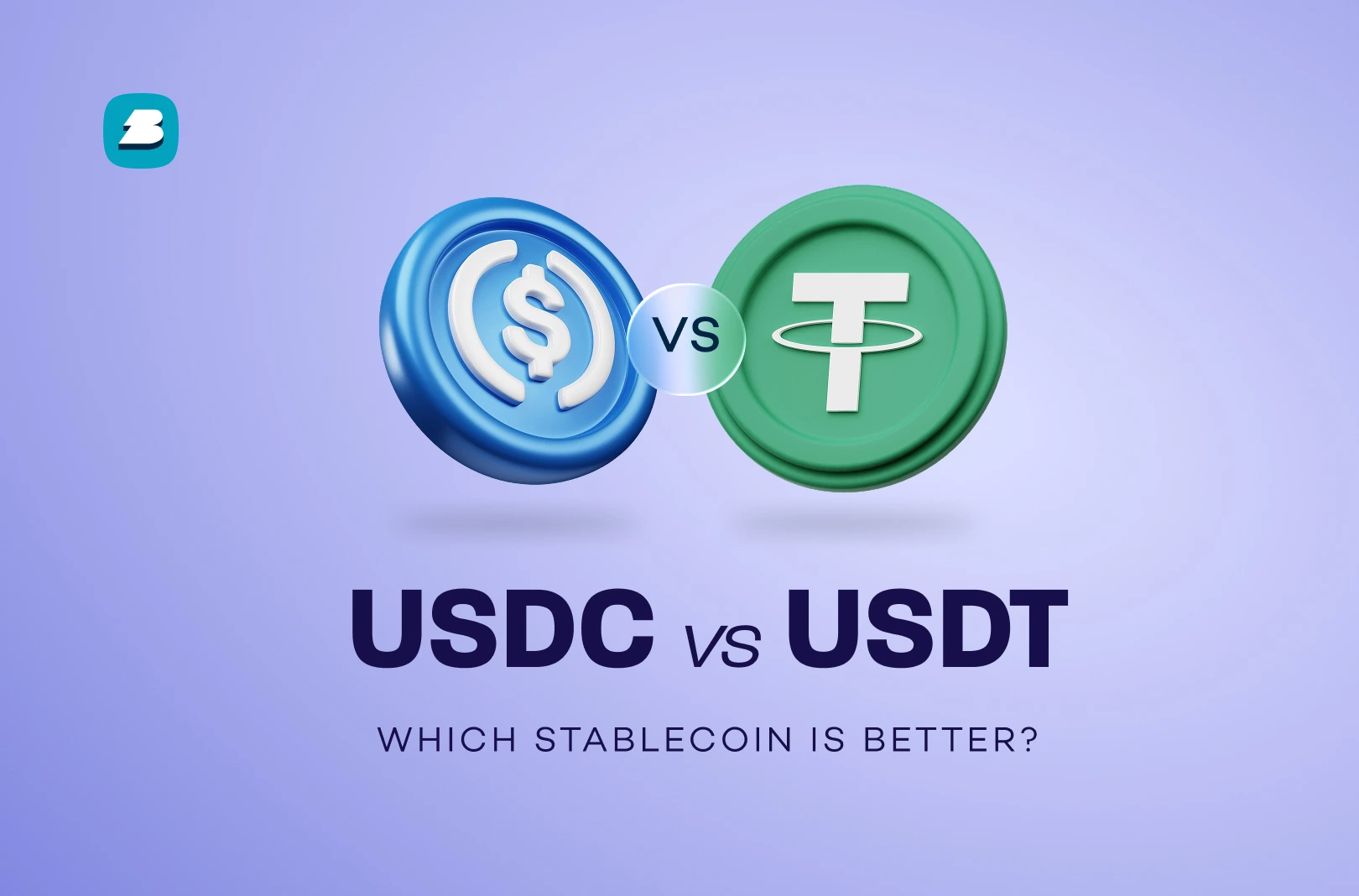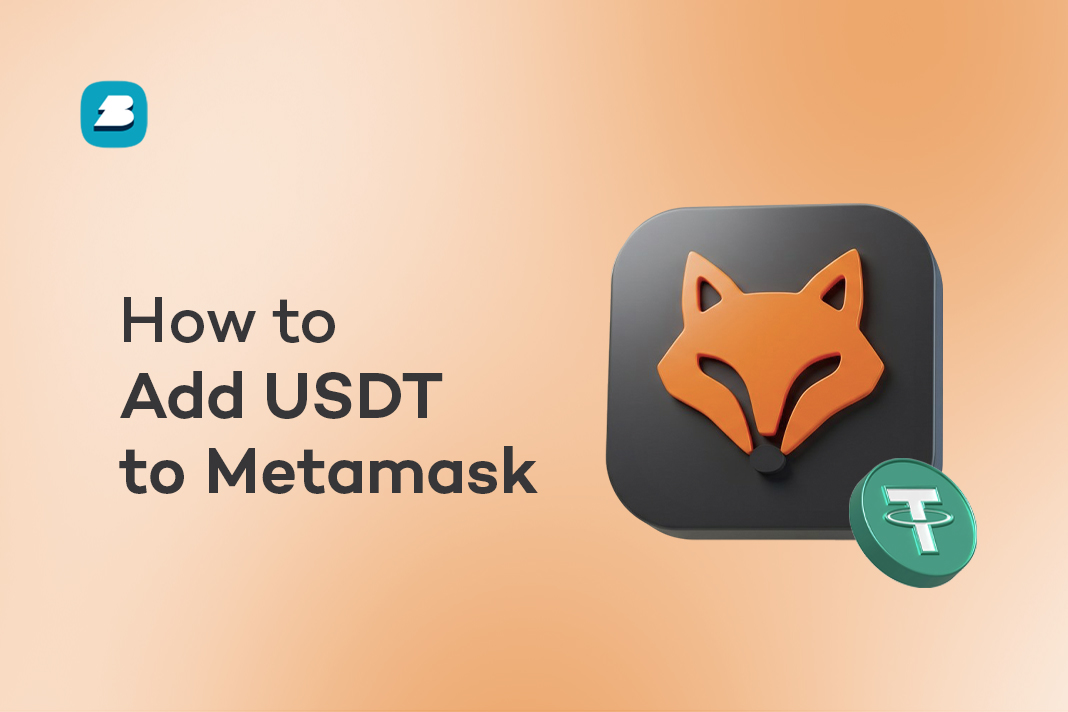Ever had a TRC-20 vs ERC-20 debate in your mind? What are the differences?
Tether (USDT) is one of the most popular stablecoins used for entry and exit from trading positions, and its stability makes it ideal for hedging against volatility.
USDT is issued on multiple blockchains, each pegged to the US dollar but with unique features.
The most notable are Ethereum (ERC-20) and Tron (TRC-20).
Here’s what many get wrong: the blockchain you choose to send, receive, or trade USDT on can significantly impact your costs and transaction speed.
So, which should you use?
Well, dive into this guide, where we break down the key differences between ERC-20 and TRC-20 USDT so you can transact with USDT more efficiently and avoid unnecessary costs.
What is Tether (USDT)?

At its simplest, USDT is the US dollar on the blockchain or on-chain dollar, issued by a company called Tether.
Each unit of USDT is designed to be worth $1 and is backed by real-life US dollars held in reserves.
Craig Sellars, Brock Pierce, and Reeve Collins founded the stablecoin in July 2014, and it was initially known as “Realcoin.”
Tether was created to solve two major issues with existing cryptocurrencies: high volatility and on-chain convertibility between fiat and cryptocurrencies.
Today, USDT is used to make borderless purchases and payments, as well as trading and investing, thanks to its stable nature.
Related:
- The Best 9 USDT Trading Platforms, Ranked
A Quick Look at Token Standards

Think of token standards as a set of rules that tell tokens how to behave on a blockchain.
They guide how tokens are created, used, and transferred.
Take Tether’s USDT for example.
You can find it on different blockchains, but each version follows the specific rules of that chain.
The easiest way to picture it is like operating systems on computers and phones. Developers don’t just make one app and expect it to work everywhere.
They create versions for Windows, Mac, and Linux. On phones, they build for iOS and Android.
Instagram is a good example.
Whether you’re using it on an iPhone or an Android phone, it’s still Instagram, but each version works within the rules of that operating system.
Blockchains work in a similar way. Each blockchain is built with its own purpose in mind. Some focus on speed, others on security, and some try to balance everything.
That’s why the same token on two different blockchains can behave slightly differently.
For instance, you might notice that transactions are faster and cheaper on one chain compared to another.
That’s where token standards come in.
They make sure tokens created on a chain play by that chain’s rules. Two well-known examples are ERC-20 on Ethereum and TRC-20 on Tron. These are the ones we’ll be talking about next.
What is ERC-20 Tether?
Tether ERC-20 is USDT issued on the Ethereum network following the ERC-20 standard, which is Ethereum’s fungible token standard and guides token creation, operation, and function.
This means ERC-20 USDT is the version of USDT used across the Ethereum ecosystem, as it is compatible with other tokens, dApps, and DeFi protocols built on Ethereum and Ethereum-enabling wallets.
This makes it a popular choice for crypto investors who want to keep their value within the Ethereum ecosystem.
Related:
- ERC20 Wallet Address: What is it & How to Get One?
What is Tether TRC-20?
TRC-20 USDT is the version of Tether’s USDT issued on the TRON network.
It is the USDT version of choice for all transactions happening on the TRON ecosystem.
TRC-20 is the fungible token standard of the TRON blockchain.
TRC20 vs ERC20: Smilarities

Both TRC20 and ERC20 are token standards, meaning they are sets of rules used to create and manage tokens like USDT on their respective blockchains. Here’s what they have in common:
- Smart Contract Foundations: Both run on smart contract platforms, TRC20 on TRON and ERC20 on Ethereum, so they allow automatic transactions and token functionality.
- Fungible Token Behavior: Each token acts like regular currency. One token equals another and they are easily transferable.
Shared Use Cases: Both can be used for sending, receiving, trading, and integrating into decentralized apps (dApps), depending on their networks.
Related:
- USDT TRC20 Contract Address: What is it & How to Get it?
TRC-20 vs ERC-20: 11 Key Differences
Now that you understand ERC-20 vs TRC-20 by their definitions, let’s highlight their key differences based on essential factors.
1. Address Style
One of the key differences between ERC-20 and TRC-20 is their address format.
ERC-20 tokens use Ethereum addresses that start with ‘0x‘ (e.g., 0xbd7e…), while TRC-20 tokens use Tron addresses that typically begin with ‘T‘ (e.g., T9zP14…).
2. Transfer Speed
The Tron network has a higher transaction per second (TPS) rate than Ethereum, so transacting with TRC20 tokens is faster than with ERC20 tokens. ERC-20 transactions can take longer, but the TRC-20 is faster and ranges from just a few seconds to a few minutes.
3. Fees
TRC-20 tokens generally have lower transaction fees than ERC-20 tokens.
Due to factors like consensus mechanisms and processing speed, transactions on Tron are cheaper than those on Ethereum.
4. Gas Fee Model and Resources
TRON uses energy and bandwidth for transactions, which can sometimes be free if you stake TRX. Ethereum requires gas fees paid in ETH, and costs can rise when the network is busy.
5. Network Congestion
TRON rarely experiences congestion, so fees and speed stay consistent. Ethereum often faces heavy traffic, leading to slower transactions and unpredictable fees.
6. Ecosystem Size and Adoption
TRON’s ecosystem is growing, especially for fast money transfers. Ethereum has a much larger ecosystem, powering DeFi, NFTs, apps, and tools.
7. Wallet and Exchange Compatibility
TRON is supported on many wallets and exchanges but not as widely as Ethereum. ERC20 tokens are almost universally supported across platforms.
8 Security and Decentralization
TRON is secure but seen as less decentralized compared to Ethereum. Ethereum is known for strong security and high decentralization with a proven record.
9. Developer and DeFi Support
TRON’s developer community is expanding but smaller. Ethereum offers robust tools, support, and the biggest DeFi network for builders and users.
10. Cross-Chain Interoperability
TRON mainly works within its own network and needs bridges to connect to others. Ethereum tokens can move more easily across chains using bridges and exchanges.
TRC20 vs ERC20: Comparison Table
| Feature | TRC20 (Tron) | ERC20 (Ethereum) |
| Address Style | Starts with T (e.g., T9zP14…) | Starts with 0x (e.g., 0xbd7e…) |
| Network | Runs on Tron blockchain | Runs on Ethereum blockchain |
| Transaction Speed | Faster, usually a few seconds to a few minutes | Slower, can take several minutes when the network is busy |
| Transaction Fees | Lower fees, often very cheap | Higher fees, can get expensive during congestion |
| Gas Fee Model | Uses Tron energy and bandwidth; free/low cost if TRX is staked | Requires ETH gas fees; cost rises when network demand is high |
| Network Congestion | Rarely congested, more stable fees | Often congested, causing slower speeds and higher costs |
| Ecosystem Size | Growing ecosystem, good for quick transfers | Larger ecosystem with DeFi, NFTs, dApps, and more |
| Wallet & Exchange Support | Supported on major platforms, but less than Ethereum | Supported by almost every wallet and exchange |
| Security & Decentralization | Secure but seen as less decentralized than Ethereum | Highly secure, more decentralized with a longer track record |
| Developer & DeFi Support | Smaller but growing developer community | Strong support, bigger community and more developer tools |
| Cross-Chain Interoperability | Mostly stays within Tron; bridges needed for other networks | Better interoperability options, but depends on tools and bridges |
Popular:
TRC20 vs ERC20 fees
When it comes to transaction fees, TRC20 and ERC20 tokens behave differently because they run on different blockchains. ERC20 tokens are built on Ethereum, where gas fees can be quite high, especially during busy times on the network. On the other hand, TRC20 tokens run on the Tron blockchain, which is designed for cheaper and faster transactions. This makes TRC20 a more cost-friendly choice for sending tokens like USDT.
Here is a full comparison:
| Feature | ERC20 (Ethereum) | TRC20 (Tron) |
|---|---|---|
| Transaction Fees | High, can range from a few dollars to over $20 depending on network congestion | Very low, often less than $1 or even close to zero |
| Speed | Slower during busy times, can take minutes | Fast, usually a few seconds |
| Main Advantage | Strong security and wide adoption | Cheap and fast transfers |
| Main Drawback | Expensive gas fees | Less decentralized than Ethereum |
TRC-20 vs ERC-20: Which One Should You Choose?
Now that you know what they have in common and their differences, here’s how to decide:
Choose TRC20 if you:
- Want low fees and fast transfers
- Make frequent small transactions like trading or sending money
- Prefer a network where speed and cost matter more than complex DeFi use
- Are comfortable with the TRON ecosystem
Choose ERC20 if you:
- Need the widest compatibility with wallets, dApps, DeFi, and exchanges
- Value security and decentralization
- Use DeFi protocols, NFTs, or Ethereum-based projects
- Do not mind paying higher fees for broader access
Don’t Miss:
- How to Add USDT to MetaMask in Minutes (2025 Guide)
Frequently Asked Questions: TRC-20 vs. ERC-20
Which is Better: TRC20 or ERC20?
It depends on your needs and priorities. TRC-20 (on the Tron blockchain) offers lower transaction fees and faster transfers, while ERC-20 (on Ethereum) can access a wide array of DeFi opportunities.
How Do I Know If My USDT Is ERC-20 or TRC-20?
Check the wallet address format: ERC-20 USDT addresses start with “0x” (Ethereum network). TRC-20 USDT addresses start with “T” (Tron network). You can check for these indicators on the exchange or wallet where you received the USDT.
TRC20 vs. ERC20 Fees
TRC-20 USDT fees are typically less than 1 USDT, while ERC-20 USDT fees are higher, often ranging from a few dollars to $20+, depending on network congestion.
Can I Transfer TRC-20 USDT to an ERC-20 Wallet?
No, you cannot send TRC-20 USDT to an ERC-20 wallet directly.
You must use a bridge or exchange to convert the tokens between networks.
What Is USDT ERC-20?
USDT ERC-20 is Tether’s stablecoin issued on the Ethereum blockchain, following the ERC-20 token standard. It is widely used in DeFi and supported by many wallets and exchanges.
Conclusion on TRC-20 vs ERC-20
Tether’s USDT market cap is currently well over $100 billion, showing its importance and usefulness.
The total supply is split between different blockchains; two major ones are Tron and Ethereum, using the TRC-20 and ERC-20 standards.
Understanding TRC20 vs ERC20 can help you choose the right network and avoid high fees.
The differences in these blockchains affect transaction speed and fees, so knowing which is suitable for your needs can save you money and time.








